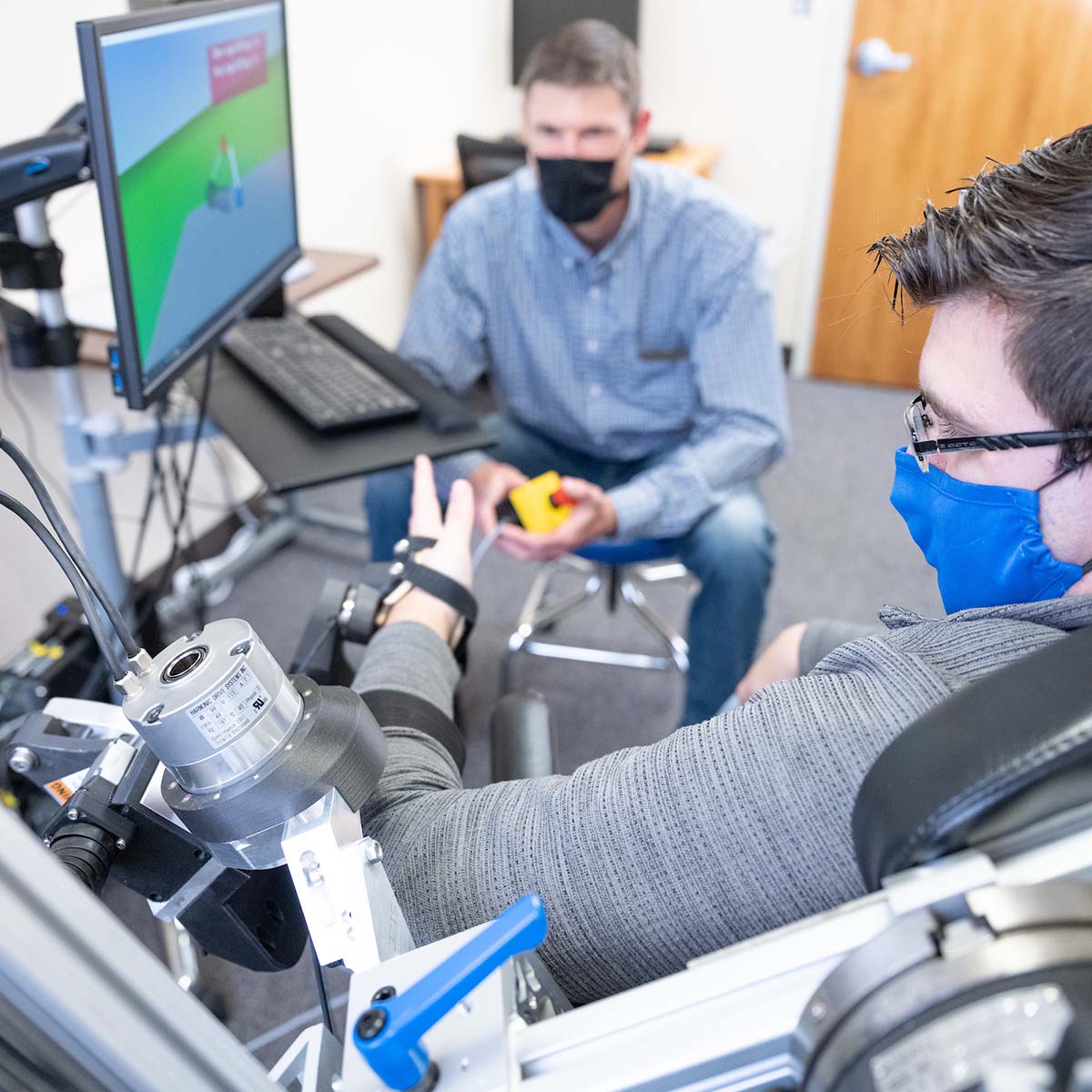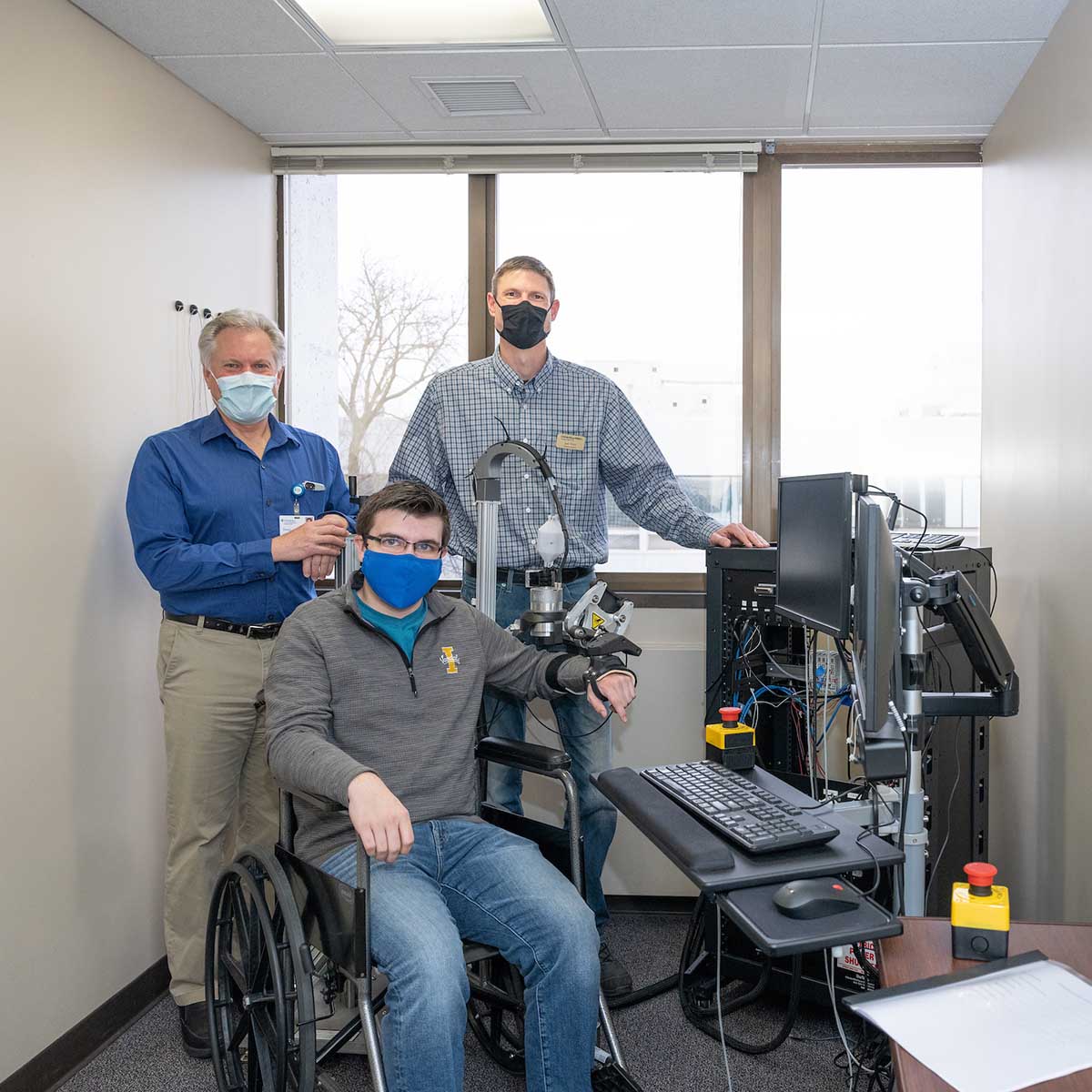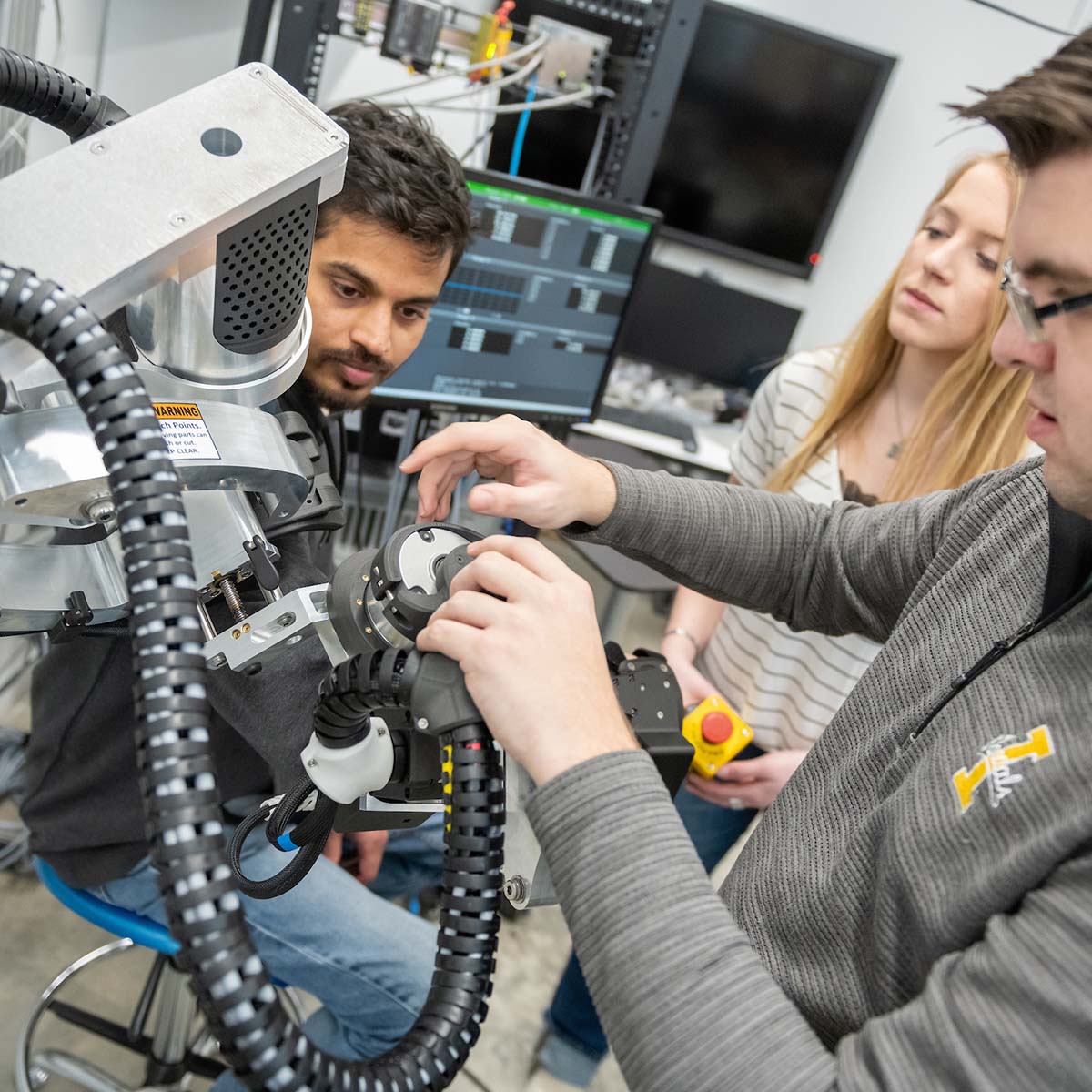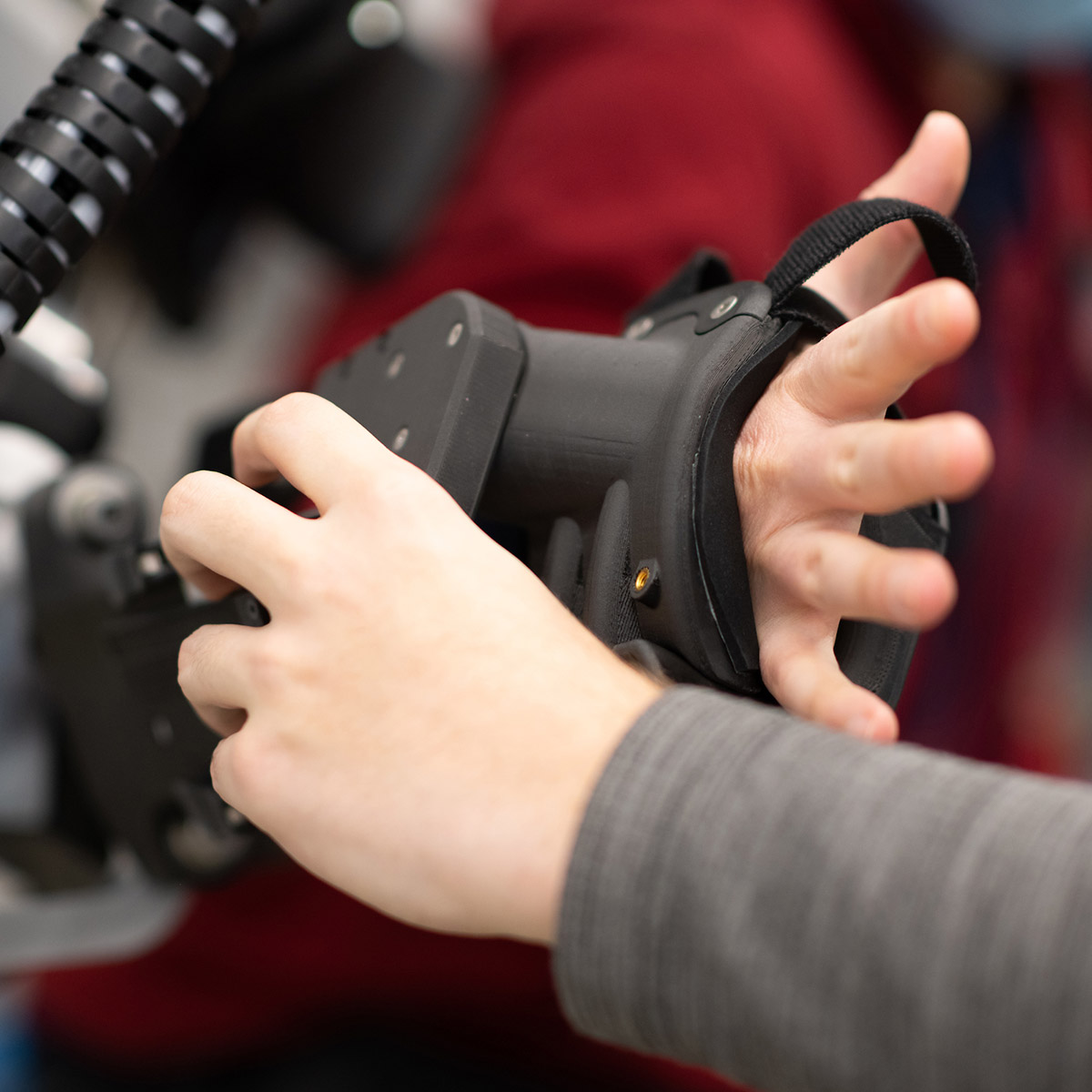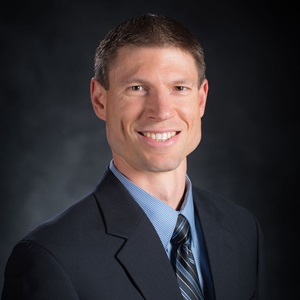Robotics and Life After Stroke
Assistive Robotics
Student Improves Robotic Devices to Advance Treatment for Survivors of Stroke
Some students know what they’re passionate about. For others, the passion finds them.
“No one wakes up and knows they’re going to be an engineer,” said Chris Bitikofer, a first-generation college student. “It’s more about using your abilities to develop interest in learning more about something.”
Bitikofer’s passion came to him in the University of Idaho’s Assistive Robotics Lab. For the past five years, he and a team of students and faculty developed complex robotic exoskeletons used in therapeutic medicine.
Working alongside physical therapists and hospital staff and developing these devices, we’re helping people improve their independence.Chris Bitikofer, Mechanical Engineering Ph.D. Graduate and First-Generation Student
Designed to mimic the movement and abilities of the human arm, these robots are being tested in regional hospitals to help stroke survivors regain mobility. They will also further medical professionals’ understanding of a patient’s impairment so they can improve therapies and treatment.
“Using my engineering degree to make positive change, this is one of the most effective ways for me to spend my time,” said Bitikofer, who will complete his doctorate in mechanical engineering this summer. “Working alongside physical therapists and hospital staff and developing these devices, we’re helping people improve their independence.”
Real Patients, Real Robots
Currently, one in four people over the age of 25 will have a stroke in their lifetime, according to the World Stroke Organization.
“Almost all of us know someone who has suffered from stroke,” Bitikofer said. “Many of those folks now live with some sort of functional impairment that makes it hard to perform everyday activities like eating or dressing.”
Weakness, limited mobility and paralysis of the limbs are common occurrences after stroke. Bitikofer, from Aberdeen, has worked alongside Dean and Cindy Haagenson Mechanical Engineering Endowed Professor Eric Wolbrecht and Associate Mechanical Engineering Professor Joel Perry to develop several robotic devices that analyze a patient’s limb movements to identify precise areas of limited mobility and gather data to help build better rehabilitation therapies.
A device focused on the evaluation of upper arm mobility is being tested with patients at Providence St. Luke’s Rehabilitation Medical Center in Spokane. The device focuses on two areas of motion — or degrees of freedom — at the elbow and forearm.
Elbow and shoulder impairment are especially common after stroke, and much assessment data already exists on the common attributes of impairment. Focusing first iterations of the device on these two joints allows the team to perfect these areas of movement before expanding to incorporate more degrees of freedom in the shoulder, wrist and hand.
“By developing these iterations of the device, we can really understand the nuts and bolts of the problem and find efficient and elegant solutions,” said Perry, who is leading the design of the systems being tested at St. Luke’s.
St. Luke’s is the largest freestanding medical rehabilitation hospital in the Inland Northwest. Director of Research Douglas Weeks has worked with the hospital for 18 years. Stroke research and rehabilitation has grown exponentially over the last three decades, he said, thanks to robotic devices like those from U of I.
“Twenty-five years ago, the way a hospital would work with stoke patients that had some type of impairment would be to teach them how not to use the affected limb and how to compensate with other body parts to perform activities of daily living,” Weeks said.
He said the collaboration between U of I students and faculty has been inspiring.
Our students are always the ones going forward and advancing things.Joel Perry, Mechanical Engineering Associate Professor
“Devices like the device from the University of Idaho are key to recovery,” he said. “They allow patients to have hundreds of practice trials in a single hour that you couldn’t duplicate if you just had a patient sitting with a therapist working on a task.”
That groundbreaking research is supported by faculty but ultimately driven by U of I students.
“Chris has gone into domains well beyond what Eric or myself have been working with,” Perry said. “Our students are always the ones going forward and advancing things. We’re just trying to give them as many tools as we can to let them excel.”
Building It Bigger
The robotic device currently being developed by Bitikofer and his lab team, a BiLateral Upper-limb Exoskeleton for Simultaneous Assessment of Biomechanics and Neuromuscular Output, called the BLUE SABINO, expands on the two-degree device residing at St. Luke’s by adding joints from the shoulder to wrist. The additional degrees of freedom will help the hospital staff better evaluate arm function at multiple points.
Eric Wolbrecht, Ph.D., P.E.
Department Chair and the Dean and Cindy Haagenson Mechanical Engineering Endowed Professor
Engineering Physics 324I
208-885-0348
Campus: Moscow
Courses: Dynamics; Dynamic Modeling of Engineering Systems; Experimental Methods for Engineers; Lean Manufacturing; Robotics: Kinematics, Dynamics, and Control; Control Systems; Applied State Estimation
Areas of Expertise: Rehabilitation Robotics, Nonlinear and Adaptive Control, Neurorehabilitation, Mechanism Design and Synthesis, Control of Pneumatic Actuators, State Estimation, Autonomous Underwater Vehicles
With a goal of getting to 30 degrees of freedom, robotic devices in the Assistive Robotics Lab assist a user’s movements without controlling them. With the increased mobility, the BLUE SABINO exoskeleton in the lab will precisely analyzes a user’s movements and level of impairment. Hospital staff will use the data gained from the BLUE SABINO to develop better therapies that expand on a user’s unique level of mobility.
“The human arm is a complicated system. The structure of our muscles and shoulder joints provides incredible mobility, and our brain and nervous system let us control it with ease,” Bitikofer said. “Overcoming the obstacles of programming and machining has been exciting.”
Every joint and piece of the BLUE SABINO was manufactured on U of I’s Moscow campus.
“It’s really hard to produce good engineering design if you’ve never seen how things are made,” Bitikofer said. “At U of I, we have the fabrication capabilities to do things from the ground up, right on campus, and we’ve used a lot of these resources to build these therapeutic devices."
Bitikofer said working alongside Perry, Wolbrecht and other students has been a very memorable experience.
Our population is aging, and our medical systems will need new and more effective tools and therapies to enable people after stroke.Chris Bitikofer, Mechanical Engineering Ph.D. Graduate
“There’s a level of coordination between faculty and students, combined with this wealth of resources and lab access; there is just something at U of I that you don’t see at other schools,” Bitikofer said. “You get the chance to stub your toe on problems as they arise. You develop a deeper understanding of how things work in the process.”
As testing continues at St. Luke’s, faculty and students in the Assistive Robotics Lab seek to improve assessment, automate physical therapy and investigate mechanisms for recovery.
“Our population is aging, and our medical systems will need new and more effective tools and therapies to enable people after stroke,” Bitikofer said. “This is a significant engineering challenge that we’re working toward, matching human dexterity with a robot in a way that allows us to automate some of the work a physical therapist might do.”
Article by Alexiss Turner, Marketing and Communications Manager, College of Engineering.
Photos by Melissa Hartley, University Creative Services.
Published in May 2022.
Joel Perry, Ph.D.
Associate Professor
Gauss-Johnson 234D
208-885-2144
Campus: Moscow
Courses: Mechanical Design Analysis, Computer Aided Design Methods, Mechanical Systems Design I/II, Assistive Technology for Physical Impairment
Areas of Expertise: Wearable Exoskeletons; Neurorehabilitation Research; Interdisciplinary Design; Prototype Development







